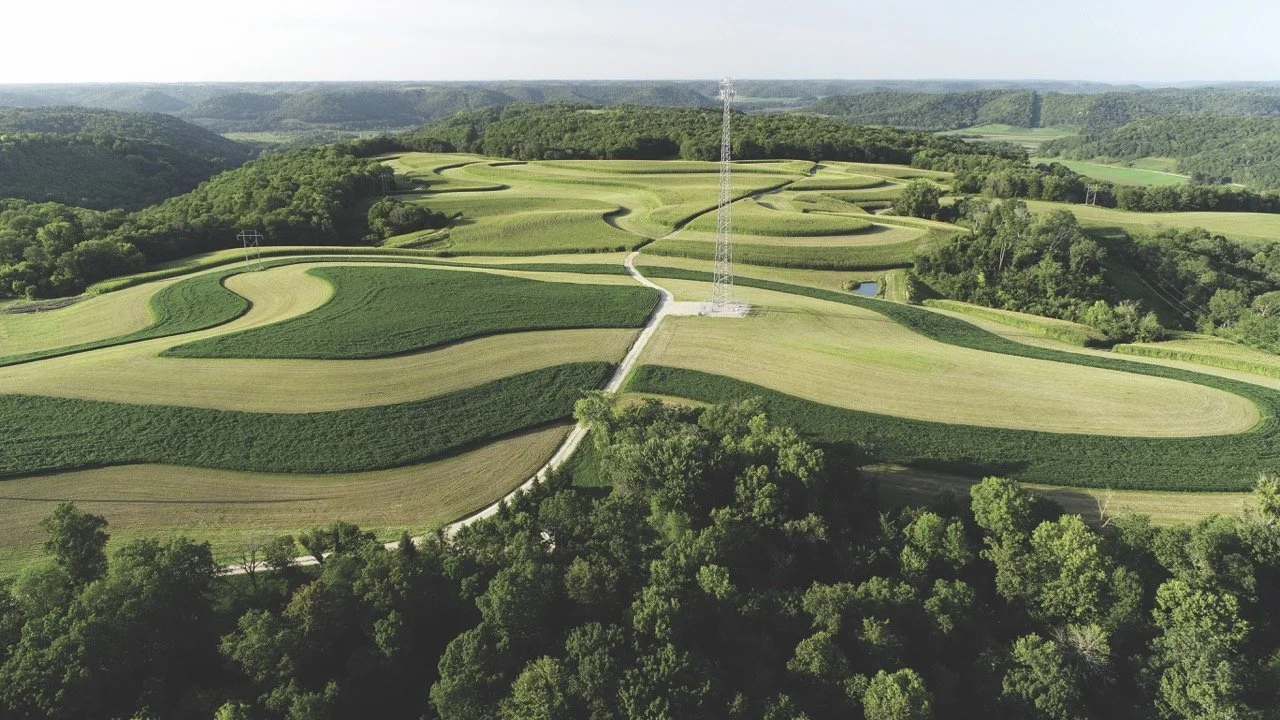Cream of the crop
Photo courtesy of Mark Noll.
Noll’s Dairy Farm grows success through stewardship
Perched on bluffs overlooking the Mississippi River, Noll’s Dairy Farm stands as a testament to the power of conservation farming. For nearly a century, three generations of the Noll family have worked to preserve the land while producing quality milk and crops just outside Alma, Wis.
Their commitment to sustainable agriculture practices has not only fueled the longevity of their farm, it’s also earned them the Leopold Conservation Award. The national program recognizes farmers who exhibit exceptional stewardship of soil, water and wildlife on working lands across 27 states.
While the award is validating, the AMPI member family’s pride comes in doing the right thing every day to keep the farm environmentally sound and economically viable. It’s been that way from the beginning.
A Sustainable Start
Scott, Curtis and Mark Noll stop at an overlook of the Mississippi River near their farm. Photo courtesy of the Noll family.
Scott Noll’s grandfather, Andrew, recognized the potential for flash flooding and high winds when he purchased the scenic but steep farmland above the river in 1929. He planted crops in contoured strips, which laid the foundation for its conservation legacy.
Scott estimates this practice has helped maintain 95% of the farm’s topsoil over nine decades of sometimes extreme weather.
Today, multiple members of the family work together to maintain the land. Scott manages the dairy operations, milking about 115 cows three times daily. His five children contribute when they can, with his oldest planning to move back to the farm after earning an agronomy degree.
Scott’s uncle, Mark, oversees the crop management and his father, Curtis, contributes to the farm’s daily operations. This multi-generational approach allows the family to effectively manage the farm and evaluate new opportunities.
Committed to Conservation
The farm consists of 400 acres of contoured fields with corn, soybeans, oats and hay, alongside 450 acres of forests, oak savannas and prairies. This diverse landscape supports their livelihoods and provides wildlife habitat and timber resources.
The land is divided into 119 fields, each four acres or less, creating a patchwork of strips that follow the natural curves of the landscape. They rotate crops and plant oats and alfalfa between soybeans and corn to help prevent wind and water erosion and keep topsoil in place.
The Nolls also practice no-till to help maintain soil structure and soil health. Cover crops, particularly rye planted after corn silage, further protect the soil and enhance its productivity.
Scott is most proud of the unique and innovative earthen dam structures strategically placed across the landscape. Since 1969, the Nolls have installed more than 20 dams to collect and slow down water flow, preventing rapid erosion.
“Keeping the topsoil in place is the most important thing we do,” Noll said. “You can’t just go to town and buy new topsoil. Once it’s gone you never get it back.”
Beyond their fields, the Nolls actively manage one of the largest dry bluff prairie remnants in Buffalo County, promoting biodiversity and providing crucial habitat for pollinators and wildlife.
The dairy operation is also part of conservation efforts because the manure from the cows is used to fertilize crops, creating a closed-loop system that reduces the need for external inputs. The Nolls worked with AMPI to complete a Farmers Assuring Responsible Management Environmental Stewardship (FARM ES) evaluation in 2022, which allowed them to review their carbon footprint and see the impact of their practices.
Rewarding Recognition
In 2023, this decades-long commitment to conservation garnered national recognition when they earned the prestigious Leopold Conservation Award for Wisconsin. Receiving it was an honor that validated their business strategy.
“When you’re in a generational farm you don’t always agree, but conservation, our love for the land and animals is something we’ve always agreed on,” Noll said. “It felt good to be recognized although we know there are many in Wisconsin and the dairy industry who work just as hard as we do. This shows that dairy farms can successfully balance productivity with environmental stewardship.”
What’s Next?
Looking ahead, Scott believes the next sustainability steps involve optimizing carbon capture on the farm. With an already positive carbon footprint, he’s curious what other opportunities exist to benefit the land, water and animals and provide additional revenue streams.
The family also intends to continue leveraging the expertise of local Extension services, conservation groups and other ag industry advocates who have been instrumental in their success. These partnerships have been crucial in identifying and implementing new practices, and remain vital as the farm adapts to future challenges. No matter what, they’ll remain adaptable and open to learning new ways of doing things.
Just like their ground, the Noll family is diverse, determined and deeply rooted in stewardship. This means that no matter how hard the winds of change blow, they will find a way to grow success for their family farm.
{Contributing writer Naomi Mortensen}
Seven Sustainable Steps
Scott Noll offers these insights to fellow AMPI dairy farmer-owners interested in adopting new conservation practices for their operations:
Assess your farm's unique needs. Find solutions that work for your specific situation.
Use environmental assessment tools like FARM ES to help evaluate your current environmental impact and efficiency.
Seek advice from experienced farmers who have successfully implemented conservation practices.
Use local resources. Engage with groups that provide guidance and help find programs and funding opportunities.
Start small and scale up. Begin with manageable changes and expand as you gain experience and confidence.
Embrace continuous learning and new ideas to adapt your practices.
Explore government programs. Look into conservation initiatives that offer funding or incentives for sustainable farming practices.



